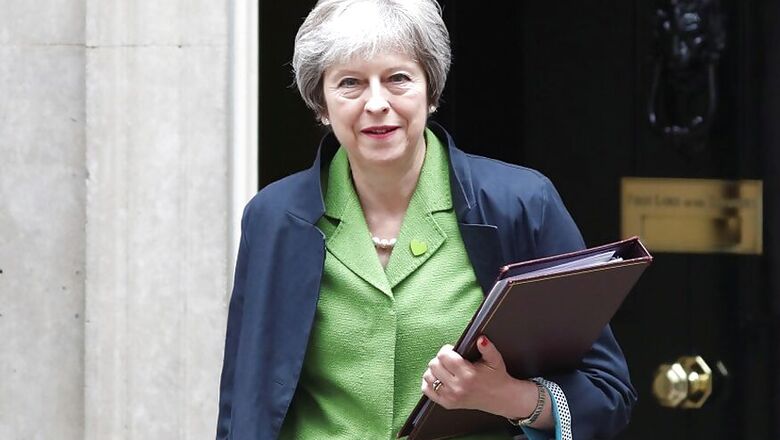
views
London: Britain's ruling Conservative party on Friday said it was "saddened by Theresa May's announcement to resign as the party leader on June 7, but understands why such a step was required.
In a joint statement by the Tory party headquarters and the vice-chairs of the influential 1922 Committee of the party's backbench MPs, the Conservatives laid out the process for choosing a new party leader who would go on to succeed May as Britain's Prime Minister.
It said that May's successor as party leader and prime minister was expected to be in place by parliament's summer recess which is set for July 20.
We are saddened by her decision but understand it, and thank her for her years of service to our Party and our nation, not just as Prime Minister but over many decades before that, notes the joint statement by Tory chair Brandon Lewis and 1922 Committee vice-chairs Cheryl Gillan MP and Charles Walker.
After the Prime Minister has resigned as Leader of the Conservative Party, we will begin the process to elect a new Leader We intend that the Parliamentary stages of the contest which involves determining the final choice of candidates to put before all members of the party should begin with the close of nominations in the week commencing 10 June, the statement adds.
Stressing that while none of them would be contesting in the leadership contest, they clarified that successive rounds of voting will take place until a final choice of candidates to put to a vote of all party members is determined.
That process is expected to be concluded by the end of June, allowing for a series of hustings around the UK for members to meet and question the candidates, then cast their votes in time for the result to be announced before Parliament recess for the summer in July.
Calling for a "full, fair and frank debate and contest", the statement notes: We are deeply conscious that the Conservatives are not just selecting the person best placed to become the new leader of our party, but also the next Prime Minister of the United Kingdom.
"That is a solemn responsibility, particularly at such an important time for our nation. We will therefore propose that the leadership election and hustings involve opportunities for non members and people who may not yet vote Conservative to meet the candidates and put their questions to them too.
Former foreign secretary Boris Johnson, seen as the frontrunner to step into Downing Street, along with Cabinet minister Rory Stewart and former minister Esther McVey have already said they intend to run for the party leadership, while more than a dozen others are believed to be seriously considering entering the contest.
Those Conservative MPs who want to fight for the top job will put their names forward to the chair of the 1922 committee, Sir Graham Brady, who oversees the contest. MPs then vote in order to whittle the names down to two candidates.
In each round, the candidate with the fewest votes is knocked out, only two MPs remain.
Each paid-up member of the Conservative Party then receives a postal ballot, and they will vote for one of the two MPs put forward by the parliamentary party to select the new Tory leader, who then goes on to become the Prime Minister.




















Comments
0 comment